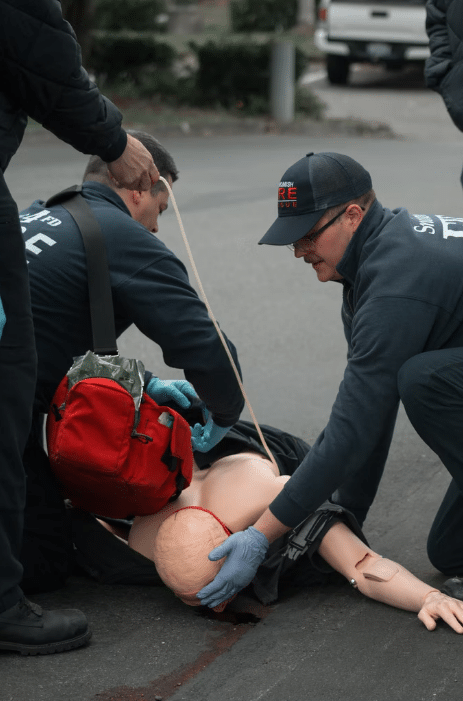Having first aid training can help one keep a clear head and intervene in a medical emergency. While it’s not a substitute for medical care, trainees can assess the nature of the emergency and provide temporary care. In some situations, this care keeps patients alive until a doctor becomes accessible, thereby saving the patient’s life.
Metro Safety Training has years of experience teaching Red Cross first aid in Richmond and several other BC locations. However, first aid is not a singular line of training. There are standard first aid courses, emergency first aid training, and job-specific training, like fall protection training. If you’re curious about the latter, check out our blog post about fall protection to see if it might help you.
If you’re looking for broader work safety training, you should consider occupational first aid.
What is Occupational First Aid?
Commonly called OFA, occupational first aid teaches students to recognize hazards and respond to emergencies common in workplaces. This training helps people make their place of work safer for everyone. They learn how to perform emergency first aid without succumbing to panic.
There are three OFA levels, and each covers more than the last.
Level 1
OFA level 1 is also sometimes referred to as workplace emergency first aid. It is open to anyone over the age of sixteen. The whole course takes 8 hours. It teaches one how to:
- Read and understand medical records and reports
- Perform CPR (cardiopulmonary resuscitation)
- Disinfect and wrap soft tissue injuries (flesh wounds)
- Recognize and gain control of a hemorrhage
- Check and clear a distressed airway
- Recognize when a patient might have a spinal injury
- Treat minor injuries
- To develop a priority action approach. This means calmly assessing a situation to determine the best course of action.
Level 2
OFA 2 is a 36-hour course. Developed in collaboration with Work Safe BC guidelines, OFA 2 teaches trainees the following, in addition to level 1 material:
- Assessing unconscious patients
- Helping self-ambulatory patients
- Repetitive strain injuries
- Treating burns
- Fractures and dislocations
- Airway management for unresponsive patients
- Recognizing and managing shock
- How to use a defibrillator
- Eye injuries
- Environment-related illnesses, like toxic substance poisoning
Level 3 OFA
This is the highest level of OFA. The course is 72 hours in total and spans several days. In addition to everything covered in the lower levels, it also teaches:
- CPR 1 and 2
- Cardiac arrest management
- Recognizing internal bleeding
- Gaining control of severe bleeding
- Intervening during respiratory failure or distress
- How to safely transport injured persons
- Applying hard collars
- How to determine whether the patient has a spinal injury
Occupational First Aid Level 3 Pro Renewal (OFA Level 3)
Each course rewards graduates with a nationally-recognized first aid certificate valid for three years. At OFA 3, one has the option to sign up for a recertification course. This course will refresh everything that trainees had learned previously, as well as update it.
While it may seem tough to schedule the longer courses, we offer part-time/evening OFA 2 and 3. Our Red Cross First Aid Training in Burnaby is quick, comprehensive, and has saved many lives. If you’d like to start doing your part to make your coworkers safer with first aid certification, get in touch with Metro Safety Training at 604-521-4227 to sign up for OFA today. Or check out our course calendar to see if you can find a workplace safety course more appropriate for you.








